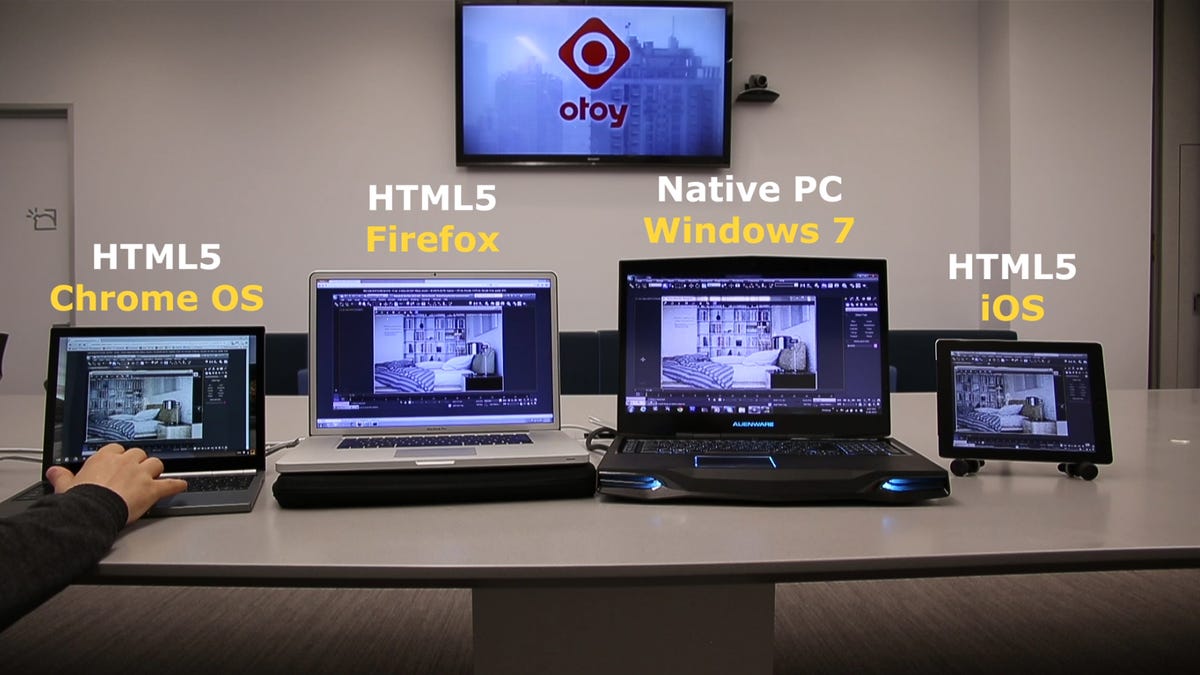Mozilla: Look ma, no plug-in for video, apps
The makers of Firefox team up with the 3D graphics gurus at OTOY to show off a new codec that can run high-end video and desktop apps in the browser.

A new codec from Mozilla and OTOY will let browsers run high-performance rendering apps like Autodesk and high-definition video without plug-ins, the companies unveiled Friday.
The new, open-source digital stream encoder and decoder, called ORBX.js, obviates the need for a plug-in like Flash, Sliverlight, or QuickTime to run HD video in the browser. Mozilla and OTOY expect live TV, watermarked video, and cloud gaming to all get a boost in HTML5-enabled browsers that support it. Currently, that list includes all five major browsers: IE 10, Firefox, Chrome, Safari, and Opera.
"Thanks to our ongoing efforts in making the Web browser faster, JavaScript performance now rivals that of safe native code, allowing OTOY to bring frameworks like this to the Web," Brendan Eich, the inventor of JavaScript who's also Mozilla's chief technology officer, said in a statement.
It's powered by a JavaScript library designed by OTOY, a Los Angeles-based company that specializes in delivering complex 3D video and rendering to its customers through a browser-based client. If you've watched "The Social Network" or "Spider-Man 3," you've seen some of the movies made with OTOY tech. Cutting out plug-ins is a big win, because it cuts down on the number of steps a client must perform before using the services.
Jeff Kowalski, chief technology officer at Autodesk, a company that's invested in OTOY to help move its own 3D-rendering software to the cloud, was bullish on the importance of the new codec. "What OTOY has accomplished with JavaScript on any Web browser promises greater flexibility without compromising performance, and that's incredibly exciting," he said. Almost as important as what the codec does for the browser itself is what it helps the browser avoid: H.264. The H.264 codec, while popular, requires browser makers to pay to use its tech, something that goes against Mozilla's goals of an open, free Web.
"We experimented with H.264 decoding in JavaScript with broadway.js previously and came to the conclusion that it was challenging to implement efficiently in JavaScript," said Vlad Vukicevic, Mozilla director of engineering and the creator of WebGL. "OTOY's codec was created from the ground up to run in a modern browser with fast JavaScript and WebGL. It is a remarkable achievement to see a high-performance video codec rivaling H.264 that runs entirely in the browser."
One of the arguments for ORBX.js is because it allows content owners to watermark video streams, it eliminates the need to protect the content with digital rights management.
The development of ORBX.js, along with recent Mozilla HTML5 innovations with ASM.js and Emscripten, show that Mozilla is aggressively pursuing a goal of stripping all plug-ins from the browser.
"Mozilla's goal is to promote an open ecosystem for content and media on the Web, so that a Web site looks and runs the same on any device," Eich said.

